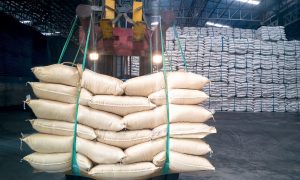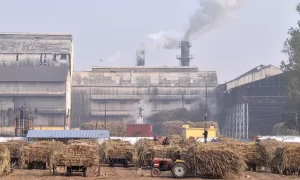Philippines sugar output poised to exceed government forecast amid pest threat

Sugar output this crop year may surpass projections, reaching 1.87 MMT as of May 11. However, a pest called red-striped soft scale threatens yields, especially in Negros. The government must act swiftly, as sugarcane supports over 700,000 livelihoods. The UPLB-SRA study urges pest management training and a long-term R\&D plan to protect the industry and stabilize food prices.
Sugar production for the current crop year, which will end on August 31, is on track to breach the revised projection of the government. Data from the Sugar Regulatory Administration (SRA) showed that raw sugar output as of May 11 had already reached 1.87 million metric tons, slightly higher than the adjusted forecast of 1.84 MMT. Sugar Order 1 released by the SRA in September 2024, indicated that the country’s output of the sweetener for crop year 2024-2025 would reach only 1.78 MMT.
While the latest figure is still 3 percent lower than the 1.92 MMT recorded in crop year 2023-2024, which ended on August 31, 2024, the Philippines may repeat its performance during the previous crop year. For one, some mills in the Visayas and Mindanao are still in operation. The absence of El Niño has also allowed plantations to prop up their sugarcane output during the current crop year.
However, the infestation of a pest dubbed red-striped soft scale is threatening the country’s sugar production. A study conducted by researchers from the University of the Philippines Los Baños (UPLB) and the SRA revealed that the initial detection of the insect pest occurred in Bacolor, Pampanga in June 2022. The pest, which had initially affected Luzon, is now in Negros Island, regarded as the country’s sugar bowl.
The spread of red-striped soft scale in Negros Occidental has alarmed the government given the potential of the pest to slash sugar content by nearly 50 percent. The SRA said the pest has been detected in farms in the southern part, central and northern part of the province. Around 87 hectares have already been infested with the red-striped soft scale, while a 12-hectare farm reported a 70-percent infestation.
Addressing the infestation of this pest should be given top priority by the national and local governments. For one, the study noted that sugarcane holds “significant agricultural importance” in the Philippines as it directly supports the livelihoods of approximately 700,000 Filipinos in farming and over 25,000 in sugar mills and refineries. Additionally, five million are indirectly employed within the Philippine sugar industry.
Lower output could also lead to a spike in the wholesale and retail prices of the sweetener, a development that could keep the prices of local food items elevated. Coupled with animal diseases that have kept hog output lower during the pandemic years and chicken more expensive, more costly sugar could make it more difficult for the government to tame inflation.
The national and the local governments should heed the prescriptions of the UPLB-SRA study, which was conducted in 2023. One of its recommendations is to train all stakeholders on pest and parasitoid recognition and identification, practical demonstrations of rapid assessment and strategic parasitoid release. It also pushed for the crafting of a comprehensive research and development plan for the long-term management of the red-striped soft scale pest in sugarcane cultivation throughout the country.
To Read more about Sugar Industry continue reading Agriinsite.com
Source : Business Mirror















